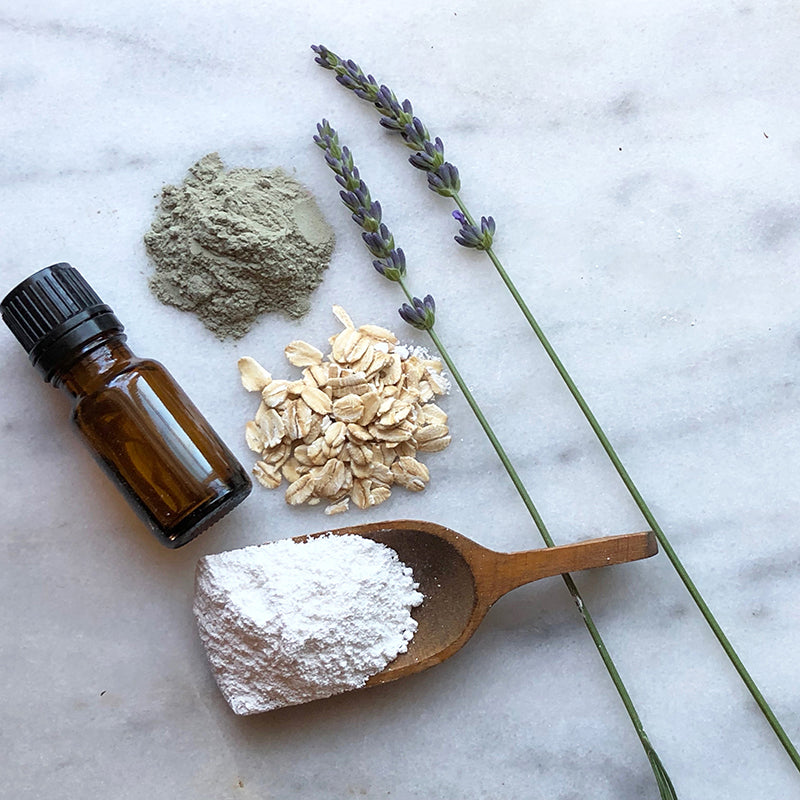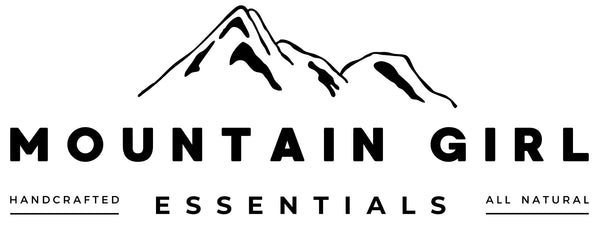
Guide to Exfoliation
Share
One of my favorite things to do with my daughters when they were teenagers was facial masks. They learned the importance of caring for their facial skin and developed some healthy skincare habits. Plus, it was a great way to spend time together. Ok, we still do face masks when we get together! So, are facial masks a necessary component of a skincare routine? How and when should we do it?
WHY EXFOLIATE?
Applying a DIY facial mask is very simple and easy to do. Compared to expensive chemical treatments, they can be a relatively affordable and all-natural way to care for your facial skin. So why should we do it?
The major action taking place while using a facial mask is exfoliation. Why exfoliate? First, it’s important to understand the natural cell turnover process called desquamation, in which our skin sheds old skin cells leaving behind fresher, smoother skin. The skin is a barrier that functions to protect from environmental pollutants and assault from microorganisms and it does its job efficiently when skin cells are shed regularly. While desquamation is a natural process that happens from the inside out, exfoliation is an external process to speed up the shedding of dead skin cells by using an exfoliant.
When natural desquamation is slow or when the skin is unable to desquamate in a normal manner, the skin will become dry and itchy, patchy with an uneven skin tone, dull and even lead to the early development of fine lines and wrinkles. As we age our skin becomes less effective at desquamation. So, exfoliation is one way you can help your skin accelerate the natural process and restore your skin to its healthy glowing appearance. Because exfoliation helps to make your skin look younger is an essential part of a successful anti-aging routine. Of course, over exfoliation can be problematic so having the right balance is important.

HOW TO EXFOLIATE?
There are two primary ways to exfoliate. Either by physical exfoliants that rub off dead skin cells or by chemical exfoliants.
Physical exfoliants include:
- Washcloths
- Facial brushes, manual or oscillating
- Facial scrubs, such as apricot seed or walnut shell hull, - never use salt scrub as the facial skin is too delicate
- Facial masks, including clays, botanical powders, almond or oat flour
When using a physical exfoliant, gentle pressure is key to avoid over exfoliating. Apply only a delicate pressure with circular motions to gently buff away dead skin cells. Another benefit is that you’re giving your face a gentle massage, and this helps improve circulation and lymphatic flow. I’m partial to the clay masks (more information below about clay), partly because they are a very fine powder and gentle on the delicate facial skin. The other reasons I like them is that the clay adsorbs toxins and impurities from the skin, and it helps balance sebum production.
Chemical exfoliants include:
- Alpha- and beta- hydroxy acids
- Lactic acid
- Retin-A
- Enzymes
Chemical exfoliants work to loosen dead skin cells and increase cell regeneration. Retin-A increases collagen synthesis and helps reverse the effects of long-term UV exposure. Unfortunately, it causes side effects such as redness, sun sensitivity, dryness, itching and burning. Some chemical exfoliants can be found naturally, such as in pumpkin, papaya and in grains like quinoa, amaranth, and rice.
WHEN TO EXFOLIATE?
Exfoliation should be a regular part of your beauty routine.A good starting place is once a week. Definitely take cues from your skin, if it is red or irritated then take it back a notch. Your skin should never feel raw after exfoliation. The goal is to eliminate old skin cells that cause a dull appearance, encourage cell regeneration, and provide a smooth, vibrant glow to the skin.
There are some contraindications. Do not exfoliate on open wounds, thin or broken skin, when a chronic inflammatory skin condition is present, sunburned skin or immediately after waxing or shaving. Remember, exfoliating is a gentle process and it is not necessary to scrub excessively.
WHAT’S SO SPECIAL ABOUT CLAY MASKS?
Clays are naturally occurring substances that have different mineral contents, trace elements and other nutrients beneficial to the skin. The mineral content and physical structure of each clay determines the effect it has on the skin. Most clays have the ability to adsorb toxins and excess oils from the skin, but each clay differs in its specific level of adsorption.
Fangotherapy– have you heard of it? The use of mud, peat, or clays to affect the condition of the skin is called fangotherapy. Fango is the Italian word for mud. Used in treatments, a highly mineralized mud is mixed with oil or water and applied over the body as a heat pack to detoxify, stimulate the circulation and relieve muscular and arthritic pain. Fangotherapy has its roots in ancient practices, originally appearing in early civilizations (6000+ years ago). Although using mud and clay on the body for healing dates back to ancient times, fangotherapy first gained popularity in the early 1800's in Europe. Over the centuries, people have traveled to enjoy the healing properties of natural thermal fango, like the geothermal mud bath and spa in Rotorua, New Zealand.
There are many different types of clay, I use Glacial Marine Clay in my masks. Found in a remote region of coastal British Columbia, this clay deeply cleanses and revitalizes skin. These deposits supply large amounts of minerals and elements that are required for good health and well-being making it one of the purest and most highly enriched clays available.
MOUNTAIN GIRL ESSENTIALS CLAY MASK
If you're using Mountain Girl Essentials Clay Mask, start with a clean face, make sure all make up has been removed. Take a 1/2 tablespoon of mask and hydrate with water, oil or hydrosol until a paste is formed. Apply to face in circular motions, massaging for about 30 seconds, avoiding your eyes. Be gentle, no scrubbing. Let dry for 5 to 10 minutes. Rinse with lukewarm water and follow with your regular toner or hydrosol.
FINAL THOUGHTS
Everyone's skin is different and results may vary, try exfoliating once a week and take cues from your skin. There are many reasons to make exfoliation a regular part of your beauty routine.
It’s a simple action that makes a real difference in a youthful appearance. Your skin will thank you.
Happy Exfoliating!




1 comment
Hi Naomi,
I have purchased one of these washcloths in the past and really love mine. Could you let me know where you purchase your hemp string to make the washcloths? I will try to make my own since you are phasing these out. Thank you so much!
Julie